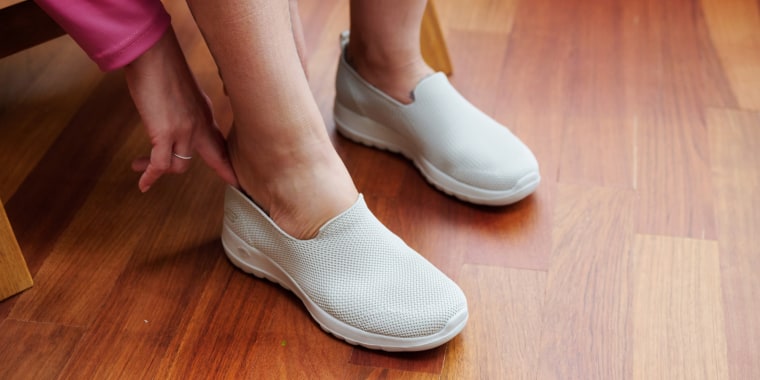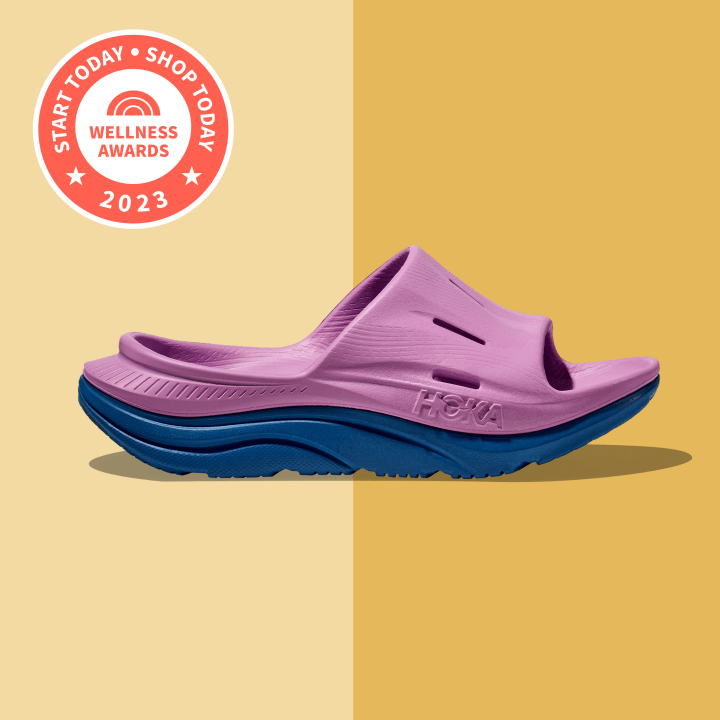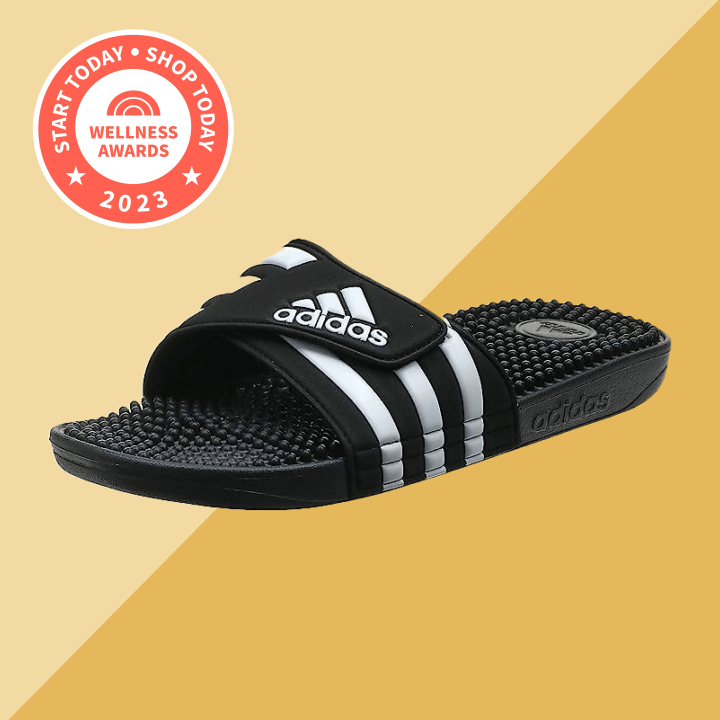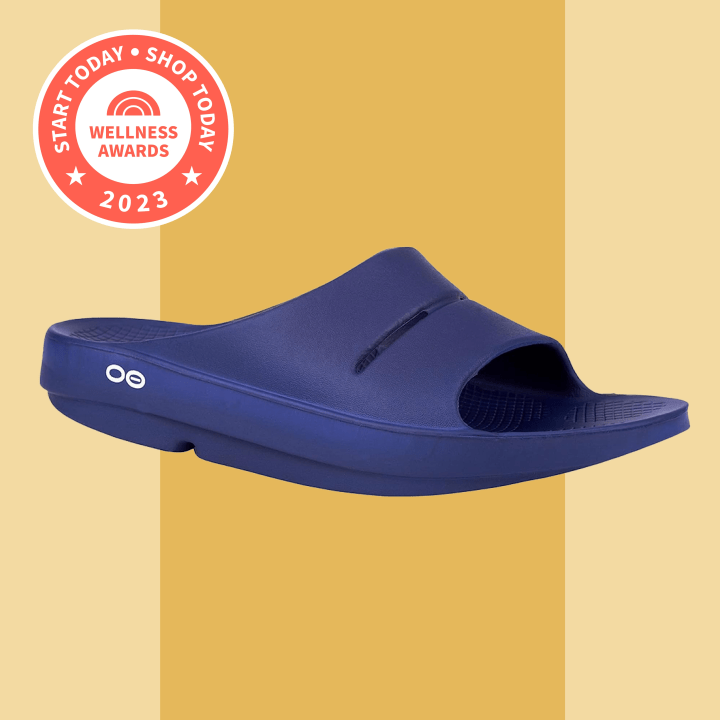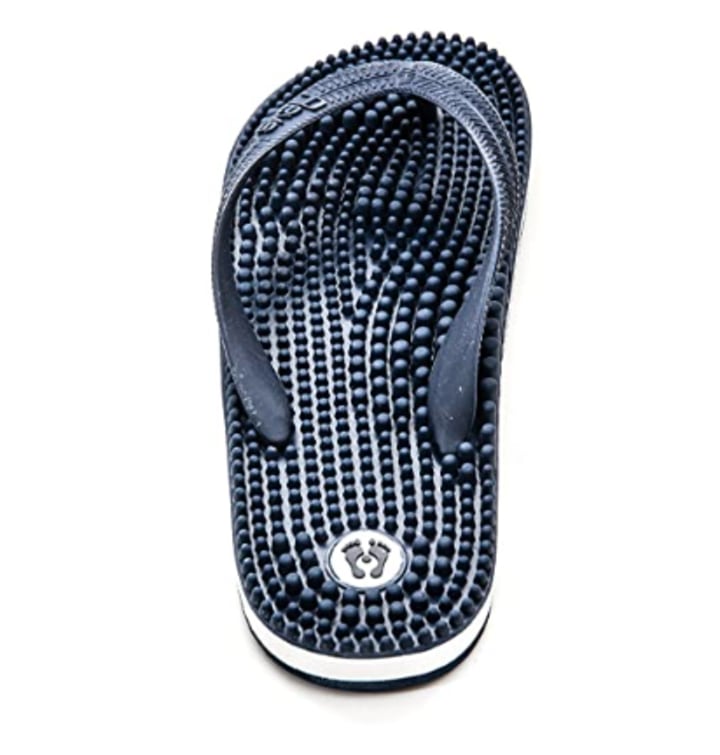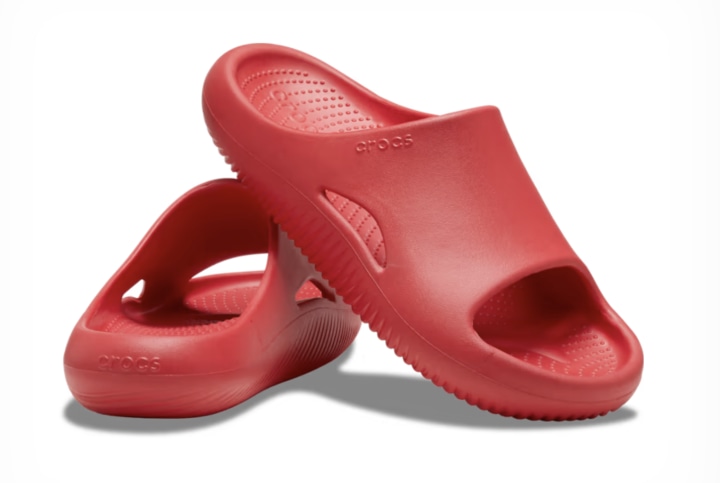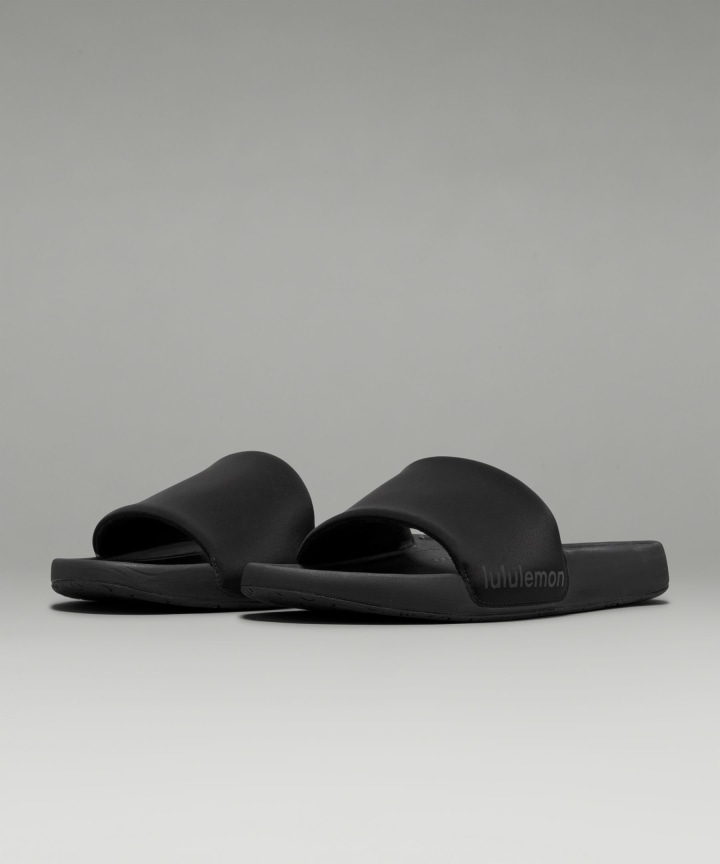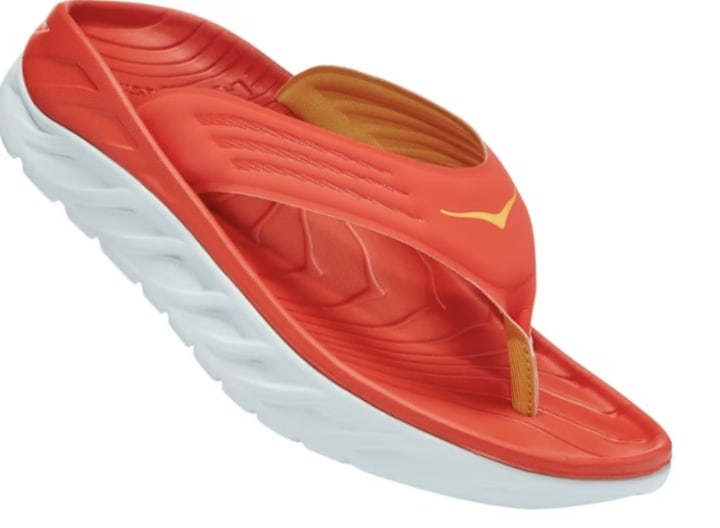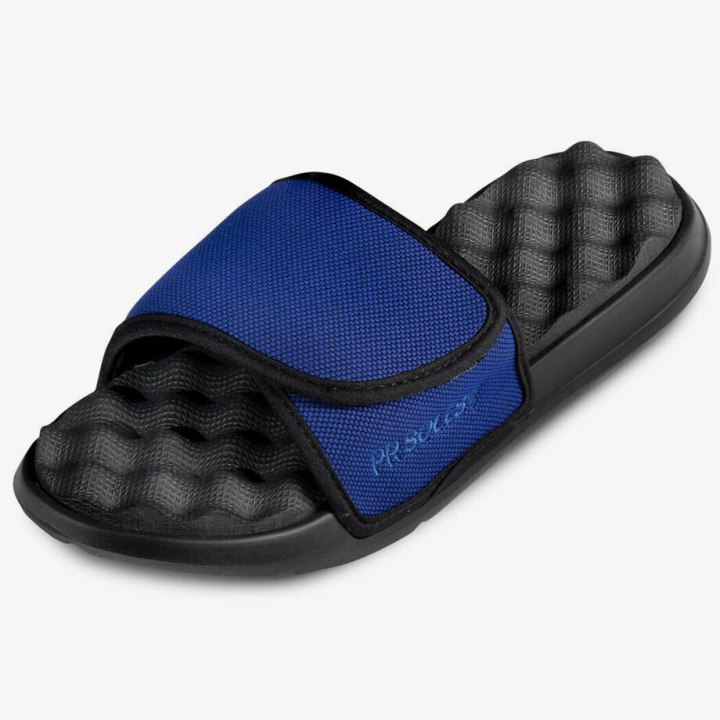If you’ve gone for a long run or participated in a tough boot camp session, you may feel on top of the world — but your feet may not feel quite so euphoric. In fact, they might be achy, tired and sore, and your legs and calves aren’t feeling so great either. So, you resign yourself to the fact that you’ll just always be in pain after a hard workout, and you immediately hit the couch.
How about this for another scenario? As soon as you’re finished with your workout, you switch out of your sneakers into a pair of recovery shoes. Suddenly, that soreness in your feet disappears and you go about your day.
With the right pair of shoes, this situation is entirely possible, especially when they’re recommended by experts like Dr. Marlene Reid of Family Podiatry Center in Naperville, Illinois, along with Dr. Emily Splichal, functional podiatrist and human movement specialist.
We asked the experts what we should be looking for when it comes to this type of footwear and found a few pairs that checked all of the boxes — including some award winners.
Why are recovery shoes necessary? | Recovery footwear vs. regular shoes | What to know about recovery footwear | Award winners | Podiatrist-approved recovery shoes
Why are recovery shoes necessary?
“The general idea is that feet need to recover after an extensive workout,” Reid says. “Many athletes, especially runners, find their feet fatigued or achy after a long, active session, which puts excessive demands on their feet and legs. This is also true of anyone in a profession that requires long hours of standing and walking.”
She explains that this soreness is caused by muscle overuse in which tendons are stretched beyond their normal capacity on irregular terrain or changing surfaces. Specifically, recovery shoes promote something called “active recovery” to “compensate for these painful results from the beating the athlete has experienced on their feet,” Reid adds.
While Reid says that it’s key to prevent the painful strains in the first place (this can be done through stretching, addressing your gait or wearing proper shoes for the sport and for your foot type), recovery is something that’s trending.
“Foot recovery, in general, is an increasingly popular concept with products including foot massage tools, recovery socks and now recovery footwear,” Splichal says. “Recovery footwear often includes arch support, cushioning and...softer fabrics intended to allow the feet to take a break.”
Splichal also notes that you don’t always have to be an athlete to benefit from recovery shoes. If you’re someone who walks a lot or has been on your feet all day, you could also slip into a pair of these shoes.
“Many people choose to wear recovery footwear due to foot fatigue or foot pain, so it does not always have to be associated with after strenuous activity such as exercise,” she says.
What makes recovery footwear different than regular shoes?
As Splichal mentions, recovery footwear has increased arch support, cushioning and more comfortable fabrics than average, everyday shoes. But she adds that there actually isn’t too much of a difference between traditional footwear and recovery footwear.
“Rather, it’s how the individual is using the shoes,” she points out. “If normally a person wears no support or flat shoes, then putting on something with arch support and cushion may be perceived as a form of recovery from the constant stress they put their feet through.”
What else to know about recovery footwear
Reid believes that if a post-activity shoe is chosen specifically to overcome the negative effects experienced by an athlete, recovery footwear can be very helpful. She says that although you can certainly purchase these shoes to wear after workouts, the preferred scenario is that you have your feet evaluated by a podiatrist who will help you come up with a strategy to avoid or minimize those negative effects.
“These shoes are meant to provide temporary relief,” Reid says. “If pain persists, or you think you may have suffered a more significant injury to the feet, ankle or legs after an especially long, active session, such as when running a marathon, do your feet a long-term favor and see a podiatrist.”
While most recovery shoes feature arch support and cushioning, Splichal is “personally not a big fan” of these details when it comes to recovery footwear, opting instead for a more minimalist shoe.
“I believe in active recovery or sensory stimulation for recovery,” she says. Active recovery can be accomplished through muscle strengthening by wearing a minimalist shoe or via massaging footbeds.
Start TODAY x Shop TODAY Wellness Award winners
Hoka One One Ora Recovery Slides
Colors: 17 | Sizes: Women's 6-15; Men's 4-13 | Amount of cushion offered: EVA mid and outsole; dual-density foam upper.
It's no surprise that Hoka sandals have earned the title of best overall recovery slide, after their viral rise to popularity. Reviewers love them due to their "comfort and versatility."
One feature that stood out to reviewers was the amount of arch support provided. "Whenever I wear another sandal or slide, it’s a noticeable difference in support, especially in the arch," says TODAY social media producer Dana Samuel.
Vionic Tide Kiwi Unisex Adjustable Slide Sandal
Colors: 7 | Sizes: Women's 6-14; Men's 5-13 | Amount of cushion offered: Doesn't specify aside from cushioning offered near the upper part of the sandal
For a unisex option, Reid suggests these slide sandals from Vionic. Sporting soft padding, a tread that improves traction and a special design to “hug your arches” as the product description says, these sandals are available in several colors. And as many reviewers shared, these sandals have greatly alleviated their plantar fasciitis.
Former Shop TODAY social page Casey Dawson thoroughly enjoyed the cushion feeling she felt each time she stepped into these slides. "I love the cushion-y feeling, and unlike other slides I’ve tried they actually stay on my feet easily! Something about the design of the velcro strap just fit really well and stayed on, not too tight or too loose," she raved.
Adidas Adissage Slide Sandals
Colors: 6 | Sizes: Women's 5-19; Men's 4-18 | Amount of cushion offered: EVA upper and EVA "nubs" on footbed.
We’re betting that you’ve likely owned a pair of Adidas slide sandals at some point in your life and, as it turns out, they are also excellent recovery shoes. Splichal loves them for their “essential, nubby footbeds” that help restore and massage tired feet.
“Massage of foot muscles can improve foot recovery and reduce foot and arch fatigue,” she says.
Reviewers love these sandals because of the velcro attachment, helping their feet to stay in place while walking, after pool workouts, or when doing chores around the house.
Oofos Ooahh Sport Slide Sandal
Colors: 5 | Sizes: 3-14 | Amount of cushion offered: Brand-specific OOfoam throughout the footbed.
Oofos is another brand that’s adored by athletes for their quality recovery footwear. They also tend to be quite stylish, pairing practical features like shock absorption and a propriety footbed that reduces stress on the joints with a chic splatter design.
"I loved how comfortable they felt," says TODAY.com managing editor Danielle Brennan. "They were so light and molded perfectly to my feet. I felt like I was walking on a cloud."
Podiatrist-recommended shoes to wear after workouts
Revs Premium Massage Flip Flops
Colors: 10 | Sizes: Women's 5-13; Men's 4-12 | Amount of cushion offered: Cushioned sole; acupressure-like footbed.
Splichal also loves the massaging footbeds of these sandals. She notes that the massaging footbeds can encourage “good circulation and blood flow to the feet and body,” which is an important part of recovery since, as Splichal notes, about two-thirds of leg muscles work together to pump blood back toward the heart. Veins concentrate in the soles of the feet and pressing and stimulating them appropriately promotes blood flow throughout your body.
Crocs Mellow Recovery Slide
Colors: 6 | Sizes: Women's 6-12; Men's 4-15 | Amount of cushion offered: Brand-specific LiteRide™ foam in the footbeds
Shop TODAY associate editor Emma Stessman ran the New York Marathon in Nov. 2023, and recovered with Crocs afterwards.
These aren't your typical clog-style of Crocs that you're used to seeing on the shelves. Instead, they feature a sandal-like silhouette a textured sole and a cupped footbed in order to provide the best post-workout relief. "Rebound" with these sandals that are easy to slip into and out of.
Lululemon Restfeel Slide
Colors: 3 | Sizes: 7-14 | Amount of cushion offered: "Dual-density midsole;" multiple layers of foam provide comfort on the midsole
Let's hear it for the boys! (And Lululemon.) While most recovery sandals are unisex, these were designed with larger, wider feet in mind. The bulk of the comfort lies in the midsole, offering support and cushion for a "relaxed feeling" while wearing them.
Available in three different colors, these slides are easy to slip on and off after a gym session, marathon or after walking multiple miles around the city.
Hoka Ora Recovery Flip
Colors: 7 | Sizes: 7-14 | Amount of cushion offered: EVA cushion on the upper, midsole and outsole
Hoka also offers a “flip-flop” style of their beloved recovery sandals that still feature the soft padding and rocking sole they’ve become famous for. In addition to wearing these particular recovery sandals that Reid recommends, she also advises wearing shoe inserts that provide shock absorption or custom orthotics that “offload the ball of the feet.”
PR Soles La Jolla Recovery Adjustable Slide Sandals
Colors: 4 | Sizes: Women's 6.5-11, Men's 3-10 | Amount of cushion offered: Brand-specific ACUPOINT soles provide relief
Reid says that she’s seen several recovery shoes that provide shock absorption through “massaging” textured surfaces, something that’s good for tired, achy feet. She considers these slides as one of her top picks, complete with a structured, cushioned footbed.
She says that these types of shoes are helpful for the short term if you’re swollen after your activity, assuming that the swelling isn’t due to injury. They also include adjustable straps, which Reid says are “helpful for people who do swell after activity.”
Meet the experts
- Dr. Marlene Reid, DPM, is a podiatric surgeon at Family Podiatry Center in Naperville, Illinois, and former president of the Illinois Podiatric Medical Association and American Association of Women Podiatrists.
- Dr. Emily Splichal is a functional podiatrist and human movement specialist. She previously spoke to Shop TODAY on when it's time to replace your sandals and the best shoes for heel spurs and bunions.
